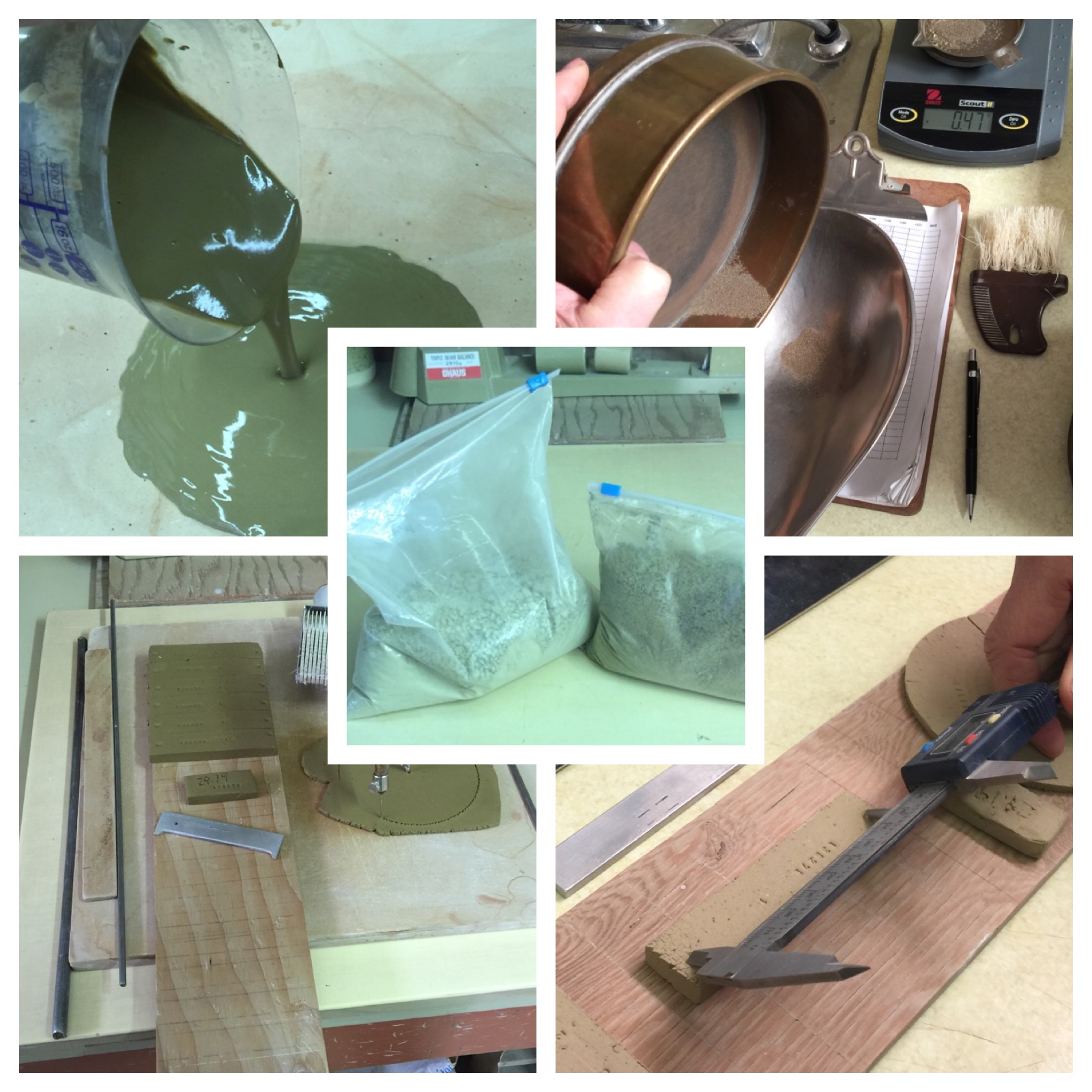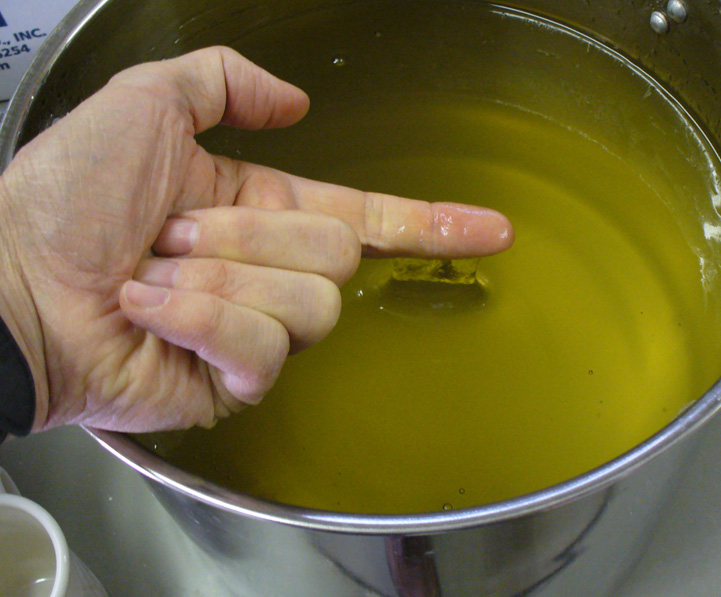| Monthly Tech-Tip | No tracking! No ads! |
Get a kitchen blender for mixing ceramic slurries
Blender mixing is invaluable in slurry preparation in small-scale ceramics and testing. It is quick and so effective that not only are particle surfaces wetted much better, but clay particles can actually be reduced in size (literally ground finer). Slurry rheology is also stabilized. For example, thixotropy can often be achieved naturally, without any additives. Materials that are otherwise impossible to mix into a slurry (e.g. bentonite, Veegum, CMC gum) or just difficult (e.g. titanium dioxide, tin oxide) are no problem. Even slurry-processed porcelains benefit, not only being more plastic, but firing to a more homogeneous surface and to greater density. Just visually, it is easy to see how much improved this MNP slurry is (a local clay with porcelaneous properties). It was mixed using our propeller mixer and seemed OK (on the left). But the improvement after only 20 seconds in the blender (right) is amazing.
Related Pictures
Testing your own native clays is easier than you think

This picture has its own page with more detail, click here to see it.
Some simple equipment is all you need. You can do practical tests to characterize a local clay in your own studio or workshop (e.g. our SHAB test, DFAC test, SIEV test, LDW test). You need a gram scale (preferably accurate to 0.01g) and a set of callipers (check Amazon.com). Some metal sieves (search "Tyler Sieves" on Ebay). A stamp to mark samples with code and specimen numbers. A plaster table or slab. A propeller mixer. And, of course, a test kiln. And you need a place to put all the measurement data collected and learn from it (e.g. an account at insight-live.com).
What should the consistency of CMC gum solution be?

This picture has its own page with more detail, click here to see it.
This is CMC gum 35g/liter gum solution after it has been thoroughly hot-mixed and cooled to about 30C. As it cools further and sits it thins. Gum solutions can have a higher CMC content, up to double this, but they are more difficult to use.
Most often, gum solution is intended to augment the water when batching a recipe - not adding to a glaze slurry. This is because adding enough to have any effect on an already-mixed glaze thins it (so an equal amount or more water should first be removed). For example, consider converting a dipping glaze to a brushing glaze: Adding the equivalent of 1.5% CMC gum powder, via this gum solution, to a gallon of glaze would also add almost a liter of water. Better to blender mix in the CMC power. CMC gum is often used in consort with a gelling agent like VeeGum, enabling more water (this is done in many commercial bottled glazes).
Incredible Mother Nature’s porcelain

This picture has its own page with more detail, click here to see it.
This is made from 100% of a natural clay (3B) from the Whitemud formation in Ravenscrag, Saskatchewan. To make this body, which I call MNP, I slake and slurry up the raw clay lumps, sieve it to 200 mesh and then dewater on a plaster table. I rolled the plastic clay into a thin layer, cut it into a cross-shape using a 3D printed cookie-cutter, drape-molded it over a plaster form and then slip-joined the seams. It fires very dense and strong (to zero porosity like glass!). It holds together well and joins well with its own slip. Although not super plastic, it is smooth and fine-grained like a commercial porcelain body. I add 1-2% bentonite to make it more plastic when needed. It can be rolled extremely thin and yet does not warp in the firing! This mug has a weight-to-volume ratio of 2.08 (the weight of water it will hold compared to its own weight).
Videos
Links
| Glossary |
Blender Mixing
An ordinary kitchen blender does a better job of mixing a ceramic slurry than any industrial machine. It even reduces clay particle size and hyper ages it. |
| Glossary |
Slurry Up
The process of slurrying a clay body powder and dewatering it on a plastic slab or table. |
| Glossary |
Propeller Mixer
In ceramic studios, labs and classrooms, a good propeller mixer is essential for mixing glaze and body slurries. |
Got a Question?
Buy me a coffee and we can talk

https://digitalfire.com, All Rights Reserved
Privacy Policy

